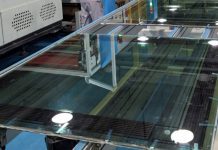
Scientists from CSIRO and Hanyang University in Korea have developed a new type of membrane that has the potential to significantly boost the performance of fuel cells and transform the electric vehicle industry.

Image credit: www.CSIRO.com.au
Inspired by the humble cactus, the membrane features a water repellent skin which can improve efficiency of fuel cells in hot conditions by a factor of four.
CSIRO researcher and co-author Dr Aaron Thornton said the skin works in a similar way to a cactus plant, which thrives by retaining water in harsh and arid environments.
“Fuel cells, like the ones used in electric vehicles, generate energy by mixing together simple gases, like hydrogen and oxygen. However, in order to maintain performance, proton exchange membrane fuel cells – or PEMFCs – need to stay constantly hydrated,” Dr Thornton explained.
“At the moment this is achieved by placing the cells alongside a radiator, water reservoir and a humidifier. The downside is that when used in a vehicle, these occupy a large amount of space and consume significant power.”
According to CSIRO researcher and co-author Dr Cara Doherty, the new cactus-inspired membrane offers an alternative solution.
“A cactus plant has tiny cracks, called stomatal pores, which open at night when it is cool and humid, and close during the day when the conditions are hot and arid. This helps it retain water,” Dr Doherty said.
“This membrane works in a similar way. Water is generated by an electrochemical reaction, which is then regulated through nano-cracks within the skin. The cracks widen when exposed to humidifying conditions, and close up when it is drier. This means that fuel cells can remain hydrated without the need for bulky external humidifier equipment. We also found that the skin made the fuel cells up to four times as efficient in hot and dry conditions.”
Project leader Young Moo Lee from Hanyang University said that team’s invention could have “major implications” for many industries, including the development of electric vehicles.
“At the moment, one of the main barriers to the uptake of fuel cell electric vehicles is water management and heat management in fuel cell systems. This research addresses this hurdle, bringing us a step closer to fuel cell electric vehicles being more widely available,” Professor Moo said.
“This technique could also be applied to other existing technologies that require hydrated membranes, including devices for water treatment and gas separation.”
The results of this cross-continent, 10-year research were published in the journal Nature last Thursday.



















